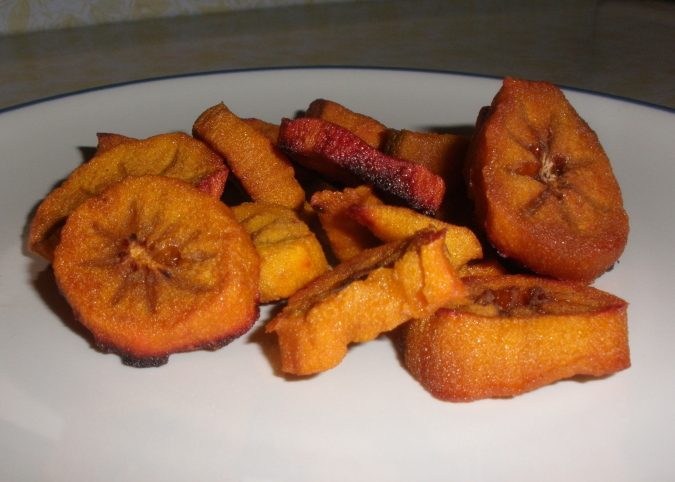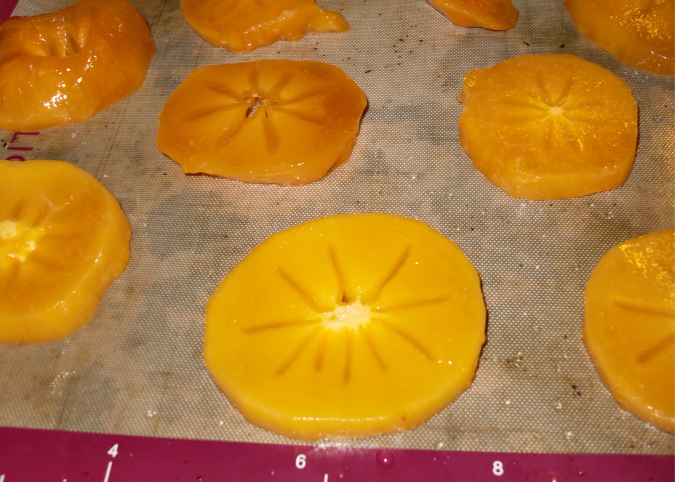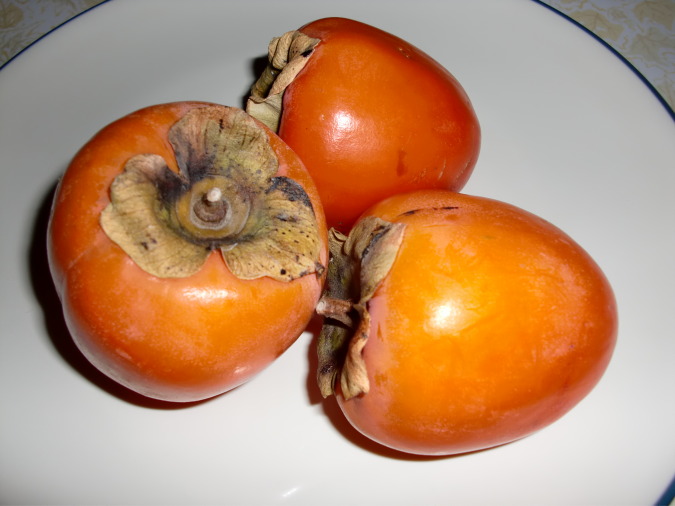I was inspired after picking up some fresh Hachiya persimmon cheap at a farmers market. They were just so freaking orange, I couldn't resist. Unlike the apple-shaped Fuyu persimmon, the acorn-shaped Hachiya need to be completely squishy-ripe before you eat them, otherwise, they are too astringent to be palatable.
Now, a year after my first experiments with persimmon, I found myself looking around on the internet to find something new to do with the them when I came across Hoshigaki - a Japanese technique for drying out the fruit on a string for several weeks. They give persimmon a little massage every few days to draw out the sugars and the result is shriveled and white because it is covered in natural sugar crystals.
I have not had the opportunity to try Hoshigaki yet, unfortunately, but if I ever see some I will be sure to snatch some up. I still may end up ordering a box this winter from another orchard, Penryn Orchards. They look delicious.
Hoshigaki has been added to Slow Food USA's Ark of Taste; a list that is being gathered naming foods in danger of extinction (a very cool project). The process of Hoshigaki is labor intensive and there isn't much of a gourmet market for it. There is a superb slideshow of the Hoshigaki process on the Otow Orchard's website that takes you from the fruit waiting on the tree to the finished product. Too bad Otow has already sold out of them this year.
I don't have the time or patience to make my own Hoshigaki this year, but maybe someday.
So what did I do with my astringent persimmon? I quartered some and broiled them hoping that the sugars would caramelize. They didn't. They ended oozing out onto the silpat and burning, leaving the persimmon quarters with a black crust. Edible, but still quite astringent and definitely not oishi.
Next I tried peeling them, slicing them thin, and slowly oven drying them like I read about in a 2005 article in the Honolulu Advertiser. At 150 degrees for about 8 hours, you turn them every so often so that they dry evenly. Now these were tasty, still quite astringent but very sweet and having a pleasant texture. They are pictured above and below.
As a "side dish," I wanted to mention some notes on astringency - that drying mouth feel that we come in contact most often with black tea and red wine. It makes the tongue feel like sandpaper. It is interesting to note that there is no flavor to astringency, it is a mouth feel, and that some people mistakenly confuse it with sour or bitter.
Astringency comes from a group of compounds called tannins because they have been used for thousands of years from one plant source or another to tan animal skins into leather. They are part of certain plant's defense mechanisms to keep mammals from eating them; mammals because apparently these compounds have no effect on birds.
Another interesting part of astringency is that its effects build when eaten in one sitting. Unlike flavors, which will diminish as we continue to taste the same flavors in one sitting (e.g. this is why we use bread or crackers to cleanse the palate between wines at a wine tasting), tannins will accumulate. Not only do the drying effects increase with the more tannins we eat together, but the duration also increases.
There is a 3 day oven drying process described in the forums at Chow.com that entails using your oven at 130 degrees for 60-72 hours. One day I may try that technique and compare them. In any case I suggest everyone gets out there and plays with their persimmons. They are sweet and delicious and unique in their astringency.
There is really nothing quite like persimmon.



